Carnivorous Sarracenia Trumpet Pitcher Velvet
Carnivorous plants definitely fall into the category of weird, wonderful and downright fascinating. Mesmerising houseplant owners of all ages with their striking appearances and fascinating adaptations to capture and feed on insects and small creatures. It is no wonder they have held their popularity for decades.
Sarracenia, commonly known as a Trumpet Pitcher plant is a natural fungus gnat killer! If you have an issue with this pest this plant is for you.
The best place to start with carnivorous plants is by understanding their natural habitat and how their environment has led them to form such unique adaptations. Carnivorous plants have been on the planet for a long time, around forty million years and have been found on almost every continent and tropical island with Antarctica being the only exception.
Carnivorous plants are typically found in areas that are high in natural light and moisture, as well as water-logged areas like swamps where the nutrients in the soil are virtually non-existent. Many of their strange adaptations have been formed from this lack of nutrients.
All plants need basic nutrients to survive and without them, they don’t stand much of a chance.
Nitrogen and phosphorus are two of the most important nutrients plants need, nitrogen is the main component in chlorophyll which plants use for photosynthesis. The other is phosphorus, which is needed to make this process possible. Plants use phosphorus to take in, store and convert the sun’s rays. Without it, they would be unable to use the sun’s energy to create the biomolecules (proteins, amino acids, DNA) they need to grow and reproduce.
Carnivorous plants have adapted over millions of years to get these essential nutrients from their environment. Unable to get these nutrients from the soil they have formed traps to capture insects and small creatures that are rich in the nutrients they lack.
There are approximately 600 different species that fall into the Carnivorous plant category. These different species have found ways of attracting, trapping, killing, and absorbing their prey purely to extract the nutrients they need for survival.
Most carnivorous plants will use bright colours, distinctive smells, and sticky surfaces to attract insects but there are some key mechanisms that make up the variations of carnivorous plants and most species can be spread across these different hunting strategies
- Snap traps use rapid leaf movement to snap shut and capture their prey.
- Bladder traps suck in their prey with a small internal vacuum.
- Pitfall traps entice prey into a small rolled-up leaf with digestive enzymes.
- Flypaper traps utilize sticky mucus to trap their prey.
- Eel traps use inward-facing hairs to force their prey towards the digestive organ.
Click here to check our care instructions to find out how to look after your carnivorous plant.
Would you like to learn about carnivorous plants? Check our article here.
Pet Friendly
- How should I position my Sarracenia Trumpet Pitcher plant for optimal growth?
- Position your plant in a spot with full light exposure, as it thrives in environments that mimic its natural, high-light swamp habitats. A sunny windowsill or a conservatory are ideal locations.
- Is the Sarracenia Trumpet Pitcher Velvet suitable for beginners?
- Yes, this plant is suitable for beginners. It requires minimal care beyond regular watering and occasional feeding, making it a fascinating yet low-maintenance choice for new plant enthusiasts.
- Can I keep this plant if I have pets at home?
- Absolutely, the Sarracenia Trumpet Pitcher Velvet is pet-friendly, posing no harm to cats or dogs, so you can safely add it to your home without concern for your furry friends.
☀️ Light
☀️☀️☀️ (High) The Sarracenia Trumpet Pitcher Velvet thrives in areas with plenty of sunlight. Place it in a spot where it can enjoy direct sunlight for several hours a day. A south-facing window would be perfect!
💧 Water
💧💧💧 (High) Keep the soil consistently moist, but not waterlogged. Use rainwater or distilled water for best results, as tap water can contain minerals that might harm the plant over time.
🌡️ Temperature
🌡️🌡️▫️ (Average) Sarracenia prefers cooler temperatures, ideally between 10°C and 27°C. It can tolerate a bit of fluctuation but keep it away from draughty areas and extreme heat sources.
💦 Humidity
💦💦▫️ (Moderate) This plant enjoys moderate humidity. Regular misting can help, especially if your home tends to be dry. Placing it in a kitchen or bathroom where humidity is naturally higher can also be beneficial.
🪴 Repotting
Repot every 2-3 years or when roots outgrow the pot. Use a mix designed for carnivorous plants, which usually includes sphagnum moss and perlite. Ensure the pot has good drainage.
🐾 Pet Friendliness
This plant is pet-friendly! It’s safe to keep around your furry friends without worrying about toxicity.
✅🪴 Recommended Locations at Home
Consider placing your Sarracenia in bright spots like near south-facing windows, sunrooms, or conservatories where it can bask in plenty of natural light.
🌬️🪴 Air Purifying
While not primarily known for air purification, its ability to trap insects can help reduce pests naturally.
✨ Other Plant Features
Besides its captivating velvet texture and unique pitcher shape, this plant is a natural conversation starter and a stunning addition to any plant collection.
If you have any more questions about caring for your Sarracenia or any other houseplants, our Mossbot is here to help! You can also contact us via our website for more information. Don’t forget, we offer a free plant hospital service if your plant pals are feeling under the weather.

Free Care Guide With Every Purchase
Scan the plant pot QR for instant access to our care guide for your plant. No hassle, no stress, just healthy and happy plants.
1 review for Carnivorous Sarracenia Trumpet Pitcher Velvet
| 5 star | 100% | |
| 4 star | 0% | |
| 3 star | 0% | |
| 2 star | 0% | |
| 1 star | 0% |
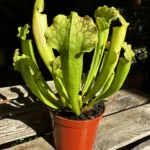 Carnivorous Sarracenia Trumpet Pitcher Velvet
Carnivorous Sarracenia Trumpet Pitcher Velvet



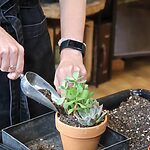
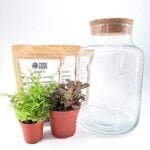
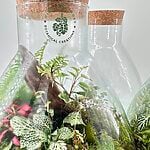
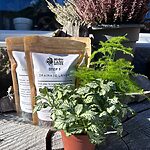

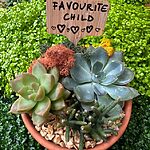
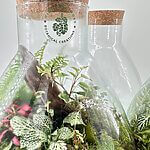


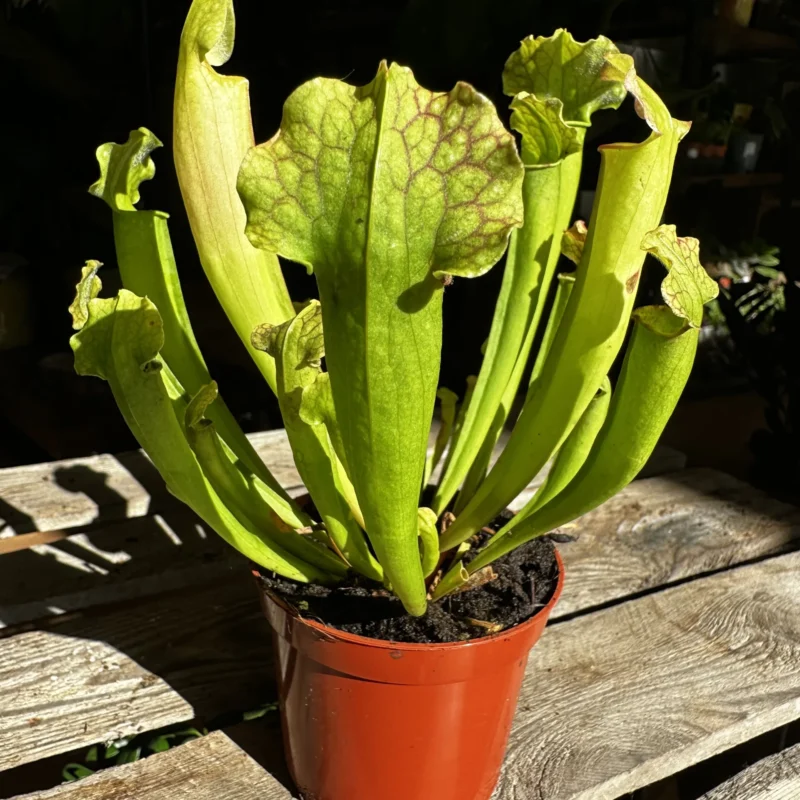








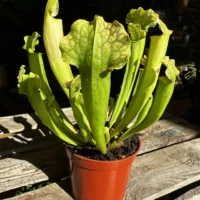
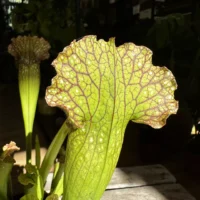
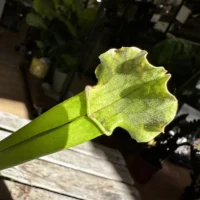
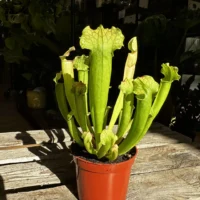
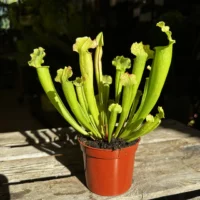
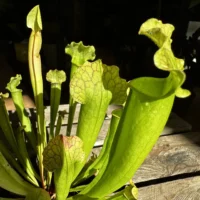
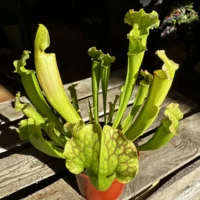
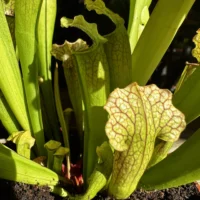
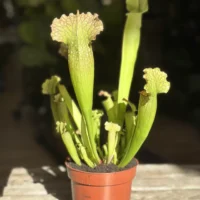
Great plant